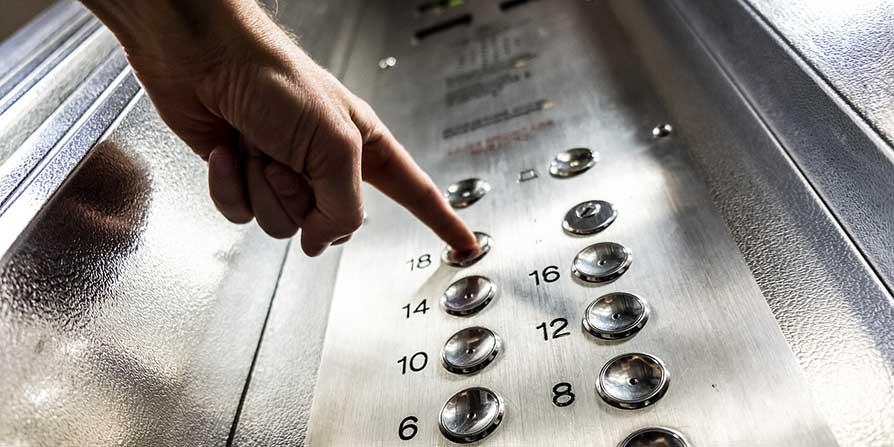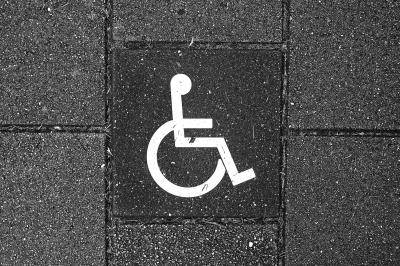Provision of lifts in upward extension using permitted development
Recent changes to the UK planning system give greater freedom for building or landowners in town centres to change use, extend upwards (up to two floors) and create new homes from the regeneration of vacant and redundant buildings.
These extensions to permitted development rights will allow these developments without the need for full planning permission provided various conditions are met (see LABC briefing). Regardless of permitted development rights, the building regulations, and other considerations such as party wall matters, build over agreements, right to light etc, will still apply.
Legislation and guidance regarding lifts
Access
The provision of lift services within a property falls under several key elements of legislation and guidance, including The Equality Act 2010, Part M of the Building Regulations, Lifting Operations and Lifting Equipment Regulations 1998, BS 8300-2: 2018, EN81-70: 2018.
The key message from all of these standards is that accessibility and inclusivity need to be at the forefront of any development.
For Part M, the flats that are created within the extended floors will need to comply with the applicable requirements of the building regulations, which includes Part M4. As permitted development does not allow for the application of optional requirements, the extended part will need to comply with Part M4(1) as a category 1 visitable dwelling.
A passenger lift is the most convenient way for many people to move from one storey to another. Where a lift is provided, it should be suitable for a wheelchair user. A lift complying with BS EN 81-70 type 1 would satisfy this requirement. This standard would meet Building Regulation requirements, but a designer should consider whether this really meets the needs of the building users.
The requirements of a passenger lift for full EN81-70 compliancy are detailed in clause 5.3.1 of the Standard (Table 3), which is summarised as follows:
| Type of car | Minimum car dimensions (mm) | Accessibility level | Building type/usage |
|---|---|---|---|
| 1 | Width: 1000 Depth: 1300 Load: 450kg/ 6 person | Accommodates one wheelchair user without an accompanying person | Shall only be used in existing building when constraints prevent installation of type 2 car |
| 2 | Width: 1100 Depth: 1400 Load: 630kg/ 8 person | Accommodates one wheelchair user and an accompanying person | Shall be the minimum size for new buildings |
| 3 | Width: 1100 Depth: 2100 Load: 1000kg/ 13 person | Accommodates one user with a Class C wheelchair and other passengers, also allows transport of stretchers | Recommended size for cars in public areas |
Fire safety
Any new, or extended lift enclosure will need to be constructed to comply with Part B of the building regulations. This will include Part B5 for access and facilities for the fire service.
Firefighting lifts
When the additional storeys being proposed take the building above 18m in height, other Building Regulation requirements for lifts extend beyond the general accessibility requirements, such as firefighting functionality, as detailed in BS9999: 2017 and also EN81-72: 2020. The proposals suggested in the Building Safety Bill 2020 would bring these buildings within the scope of the building safety regulator for building regulation purposes. Similarly, when additional storeys are proposed to an existing building already exceeding the 18m height threshold, the access and facility requirements for the fire service apply. These buildings would already be within the scope of the building safety regulator under the proposals in the Building Safety Bill.
Typically lifts are not used in the event of a fire, as they should return to the ground floor (main exit level) and shut down upon activation of the alarm in accordance with BS EN 81-73:2016; (Behaviour of lifts in the event of a fire).
However, where the top storey landing exceeds 18m, firefighter lifts aid the fire and rescue service in the event of a fire and can also be used by building management as part of an emergency evacuation plan.
These lifts are part of a building’s fire strategy, with fast, reliable service from the lifts being paramount in design and to ensure the fire service can battle a blaze safely and efficiently.
Firefighting lifts have strict design criteria (which aligns with EN81-70 requirements) for size and performance. A brief overview is detailed below:
- The lift car should be of at least 630 kg rated load with minimum internal dimensions of the car of 1100 wide × 1400 deep.
- Power-operated doors should be fitted, providing an opening of 900 mm × 2000 mm (800 mm wide doors are permitted in existing buildings). The landing doors should provide fire resistance of at least half the period of the wall in which it is fitted. This is typically FD30 in non-domestic buildings with a firefighting lobby and FD60 in domestic buildings with a residential corridor.
- The lift can reach the top floor within a time of 60 seconds (for travels up to 200 m).
- All electrical equipment within the lift well is protected against water ingress to the appropriate IP rating.
- A trap door is provided in the lift car roof for purposes of escape from the lift car by firefighters.
- Additional ladders are provided to facilitate escape from the lift car.
- A key switched control and communication device is available to enable the fire service to take command of the lift upon their arrival.
- There should be two separate fire-protected power supplies.
Evacuation lifts
Evacuation lifts can be used by the building’s management to assist with the movement of any of the building’s occupants needing a step-free escape provision. The proportion of building occupant’s reliant on an alternative evacuation plan other than stairs is likely to increase with increasing height of the building. In the post Grenfell era, there is considerable scrutiny in this area and there are planned changes to the applicable standards relating to safe, swift step free vertical egress.
The London Plan Guidance Sheet Policy D5(B5) (Greater London Authority) was published on 2 March 2021, the document states that in all developments where lifts are installed, as a minimum, at least one lift per core (or more subject to capacity assessments) should be a suitably sized evacuation lift. The minimum provisions outlined within the Fire Statement or Inclusive Design Statement should be for one evacuation lift per core within the proposed development. This will be later supported by the provision of the EN81-76 standard (Evacuation of persons with disabilities using lifts).
Existing lifts
Where there is an existing lift shaft within the property, it means the footprint allocated for the lift installation has already been established. Where it is proposed to use an undersized existing lift shaft for compliance with the building regulations, early discussion with your local authority building control is recommended.
There may be restrictions in shaft sizes (particularly in pre-1990’s properties); however, the lift shaft is likely to be such that it can be utilised for the new lift installation (or shaft extension), depending on what lift equipment is installed.
Some things to bear in mind when extending a property with a lift:
- The construction of the shaft itself (often brick/block, but occasionally steel) to ensure it lends itself to future installation works.
- The requirements of the property (how many apartments, etc.) to ascertain size, speed and number of lifts required.
- Lift shafts occasionally house asbestos and it is rare that any refurbishment or demolition asbestos survey accesses the lift shaft, so this should be reviewed.
- The slab/cap of the lift shaft will likely require removal, so the input of a structural surveyor will be needed to ascertain whether this is part of the structural floor above.
- Neighbouring properties to the lift shaft (and whether sound protection is required), as modern machine room equipment houses the motor at the top of the shaft, potentially adjacent to a bedroom.
No existing lift
This offers more of a challenge if a lift is required, as there is the need to allocate space for a lift shaft somewhere within the property. The footprint of a lift shaft is typically 2m x 2m which could impact on common parts within the property.
The alternative solution in this scenario is an external lift shaft, which can add step free access to a building where before there was none. This option offers the chance to be creative with design – matching external brickwork, or clad finishes to make a feature of the lift shaft, or even a glazed lift shaft (possibly with scenic glass doors) which could act as a lightwell to open up the building’s common parts.
The provision of an external lift shaft offers challenges, but a smart design can often limit the costs of this option, whilst enhancing the property. Utilising existing windows on an external façade for the clear openings required by a lift (1100mm wide x 2100mm high approx.) saves considerably on building works and as mentioned above glazing the lift shaft may offset any loss of light.
Other factors to consider when providing a lift where previously there has been none:
- The power supply to the lift will generally require a 3 phase (415v) power supply, with a rating of 32A. A secondary power supply should be provided in accordance with BS 9991 and BS 8519.
- An emergency call service is required. These can often be provided by GSM (global system for mobile) technology for example.
- Fire alarm functionality (as detailed above) means if the lift is not a firefighting or evacuation lift, it should home to ground and isolate in the event of a fire alarm in the building being triggered.
- Fire rating of the new structure (whether inside or outside of the property) needs to be considered, along with the needs of the building as detailed above.
This article was produced by Ardent and you can contact their team via their website or by calling 01394 200328.
Please Note: Every care was taken to ensure the information was correct at the time of publication. Any written guidance provided does not replace the user’s professional judgement. It is the responsibility of the dutyholder or person carrying out the work to ensure compliance with relevant building regulations or applicable technical standards.
Sign up to the building bulletin newsletter
Over 48,000 construction professionals have already signed up for the LABC Building Bulletin.
Join them and receive useful tips, practical technical information and industry news by email once every 6 weeks.
Subscribe to the Building Bulletin




Comments
NEW BUILD EDUCATIONAL BUILDING COLLEGE CAMPUS 40M X 20M
Submitted 2 years 2 months ago
NEW BUILD - NO LIFT NO INTERNAL ESCAPE STAIR
The proposed scheme intends to use a spiral staircase for means of escape across a 20M flat roof. This falls under phase 1. Phase 2 will extend first floor providing 6 additional teaching spaces. The proposed scheme has no internal independent escape stair as the college wish to access the main 4 storey building via a link corridor entering at ground and first floor from the new building, attached is a part drawing showing the populated zone of the existing building and identifying the 2 escape stairs that service 4 floors of the existing building.
New build PHASE 1
Ground Floor between 16-24 per workshop x 4 (64 or 96)
First Floor 4 teaching spaces 25 per space x 4 (100)
New build PHASE 2
Ground Floor between 16-24 per workshop x 4 (64 or 96)
First Floor 10 teaching spaces 25 per space x 10 (250)
Would it be possible to arrange a site visit to discuss further.
LABC response
Submitted 2 years 2 months ago
Thank you for your comment. LABC is a membership organisation, providing advice and support to its member local authorities around England and Wales. As a result, LABC cannot comment on the application and enforcement of the Building Regulations to a particular situation as this is a matter for the local council and ultimately the courts. Please contact the Building Control team at your Local Authority to discuss any project specific requirements. You can find the contact details of the relevant Building Control team by entering your postcode in the search box at the top right-hand side of our website.
Best,
LABC team
Add new comment